Table of Contents
Tissues are groups of similar cells that work together to perform specific functions in living organisms. They are like building blocks that make up different parts of the body. There are four main types of tissues in animals: epithelial [covering], connective [supporting], muscular [movement], and nervous [communication]. In plants, there are also different tissues, such as vascular tissue that helps in transporting water and nutrients, and protective tissue that covers surfaces. Plant tissues help in growth and support, while animal tissues enable various activities like movement and protection. Tissues are essential for the proper functioning of both plants and animals.
Plant Tissue
Plant tissue is a group of similar cells that work together to perform specific functions in plants. There are two main types: meristematic tissues, which help plants grow by forming new cells, and permanent tissue, which supports and protects the plant. Permanent tissue is further divided into simple tissues (like parenchyma, collenchyma, and sclerenchyma) that have specific jobs, and complex tissues (like xylem and phloem) that help transport water, nutrients, and food throughout the plant. Overall, plant tissues are essential for the growth, structure, and function of plants.
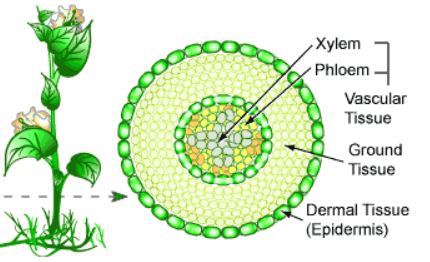
Animal Tissue
In animals, tissues are collections of similar cells that work together for specific tasks. There are four main types of animal tissues. Epithilial tissues cover surfaces and line cavities, providing protection and aiding in absorption and secretion. Connective tissue supports and connects different supports and connects different parts of the body, like bones and blood. Muscle tissue is responsible for movement and has three types: skeletal muscles move bones, cardiac muscles make the heartbeat, and smooth muscles control organs. Lastly, nervous tissues send signals throughout the body, helping with communication and control of various functions.

Difference Between Plant Tissue and Animal Tissue
We have discussed a few common differences between plant tissues and animal tissues in the table mentioned below:
| Difference Between Plant Tissue and Animal Tissue | ||
| Feature | Plant Tissue | Animal Tissue |
| Structure | Generally simpler in structure; plant tissues often have rigid cell walls made of cellulose. | More complex structures; cells lack rigid cell walls and have a flexible membrane. |
| Growth | Growth is often localized at specific regions, such as root and shoot tips [meristems]. | Growth occurs throughout the body and is not limited to specific areas; cells can regenerate in many tissues. |
| Types of Tissues | Mainly classified into meristematic [growth] and permanent [non-growing] tissues. | Divided into four main types: epithelial, connective, muscular, and nervous tissues. |
| Cell Wall | Has a cell wall that provides rigidity and support, helping plants stand upright. | Lacks a cell wall, which makes cells more flexible and allows for various cell shapes. |
| Chloroplast | Contain chloroplasts in photosynthetic tissues, allowing them to produce their own food through photosynthesis. | Lack chloroplasts, so they cannot perform photosynthesis and depend on external sources for energy. |
| Vacuoles | Plant cells usually have large central vacuoles that store water and maintain cell turgidity. | Animal cells have small or absent vacuoles; their function in water storage is less significant. |
| Intracellular Space | Typically, plant tissues have more intercellular spaces to aid in gas exchange and provide structural support. | Animal tissues generally have fewer intercellular spaces, as cells are tightly packed to perform specific functions. |
| Regeneration Ability | High regenerative ability; plants can often grow back parts (like leaves or branches) due to meristematic tissue. | Limited regenerative capacity; only specific tissues (e.g., skin, liver) can regenerate, but others (e.g., nervous tissue) cannot. |
| Vascular System | Plant tissues include specialized vascular tissues (xylem and phloem) for transporting water, nutrients, and food. | Lacks a vascular system like xylem and phloem; blood vessels and circulatory systems are used for transport in animals. |
| Cell Differentiation | Less differentiated; many plant cells can de-differentiate and transform into meristematic cells for growth. | Highly differentiated; animal cells have fixed functions and are specialized into specific types, like neurons, muscle cells, and epithelial cells. |
Different Types of Plant Tissue and Animal Tissue
Plants and animals have different types of tissues that help grow, function, and survive. In plants, tissues help with support, nutrient transport, and making food. Some tissues strengthen the plant, while others carry water and nutrients. In animals, tissues work to perform various roles like movement, carrying messages, protecting organs, and connecting body parts. These tissues ensure that animals can move, respond to their environment, and stay healthy.
Types of Plant Tissue
There are many different types of plant tissues, some of which are as follows:
1. Meristematic Tissue:
Meristematic tissue is responsible for plant growth. It consists of undifferentiated, actively dividing cells found in growth regions like root and shoot tips. These cells are small, thin-walled, and densely packed, allowing rapid cell division. Meristematic tissue is classified into apical (increases length), lateral (increases girth), and intercalary (occurs at internodes). These tissues are essential for primary and secondary growth, giving rise to permanent tissues as they differentiate.
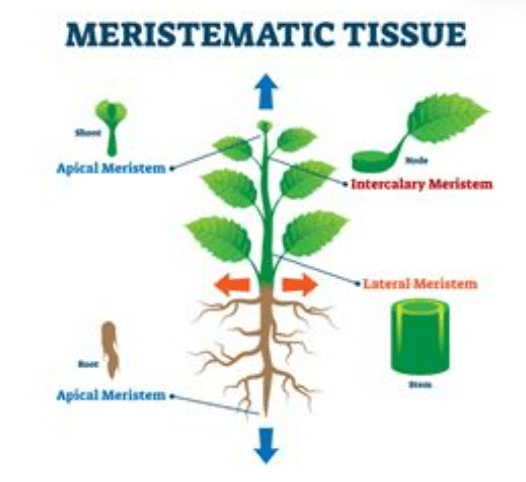
2. Parenchyma Tissue:
Parenchyma is a type of simple, living plant tissue primarily responsible for storage, photosynthesis, and tissue repair. Composed of large, thin-walled cells with intercellular spaces, parenchyma cells can vary in shape and are found in roots, stems, and leaves. Some parenchyma, like chlorenchyma in leaves, contain chloroplasts for photosynthesis. This versatile tissue also provides flexibility and support while helping in metabolic functions and, sometimes, floating ability in aquatic plants.
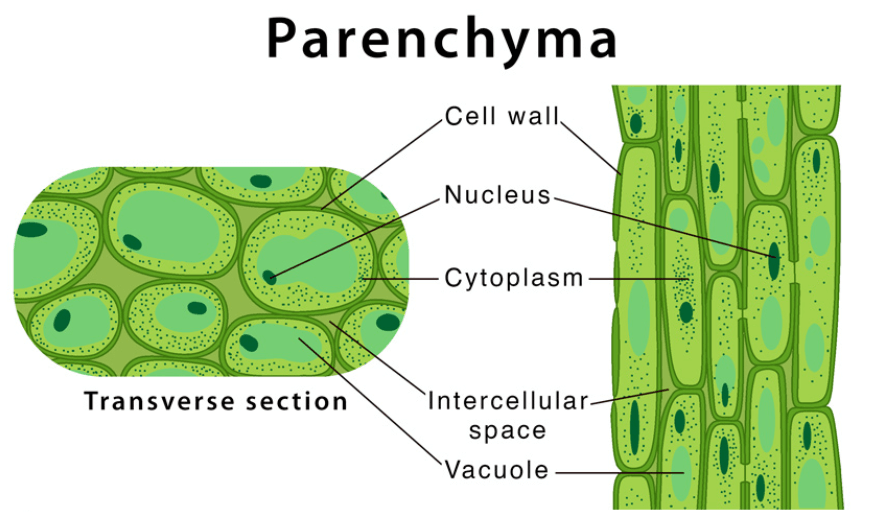
3. Collenchyma Tissue:
Collenchyma is a living tissue that provides mechanical support and flexibility, allowing plants to withstand bending. Composed of elongated cells with unevenly thickened cell walls, especially at corners, it’s commonly found in leaf stalks and stems. Collenchyma cells support young parts of the plant, especially during growth, without restraining development. It helps prevent structural damage and is highly adaptable, responding to environmental factors like wind and weight to maintain structural integrity.
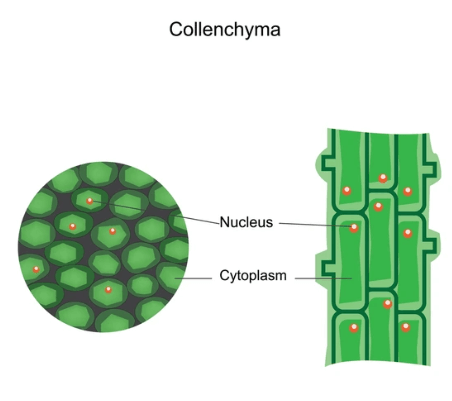
4. Sclerenchyma Tissue:
Sclerenchyma tissue is a type of dead, supportive tissue that strengthens mature plant parts. Made of long, lignified cells with thick secondary walls, sclerenchyma is found in stems, bark, seeds, and hard structures like nutshells. It has two forms: fibers (elongated for tensile strength) and sclereids (irregular, for rigidity). By providing mechanical support, sclerenchyma ensures structural stability and resistance against physical stress, enabling plants to stand upright and bear environmental pressures.
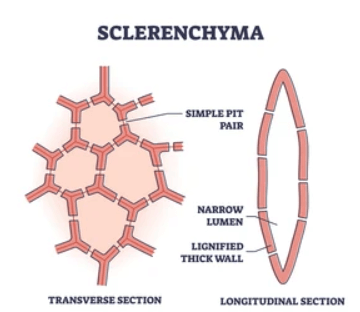
5. Xylem Tissue:
The xylem is a vascular tissue responsible for water and mineral transport from roots to other plant parts. Composed of tracheids, vessels, xylem fibers, and xylem parenchyma, xylem cells are mostly dead and lignified for strength and durability. This tissue forms continuous tubes for efficient water conduction and provides structural support. The xylem is crucial for maintaining plant hydration, enabling photosynthesis, and contributing to the plant’s rigidity.
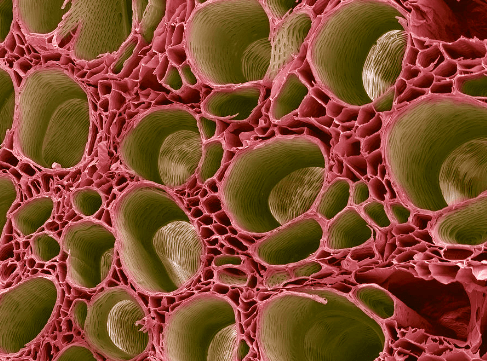
6. Phloem Tissue:
Phloem is a vascular tissue responsible for transporting nutrients, primarily sucrose, from leaves to various plant parts. It consists of sieve tube elements, companion cells, phloem fibers, and phloem parenchyma. Unlike xylem, phloem cells are living and work actively to transport food. This tissue enables the distribution of energy from photosynthesis to roots, stems, and growing regions, supporting overall plant growth, metabolism, and storage processes.
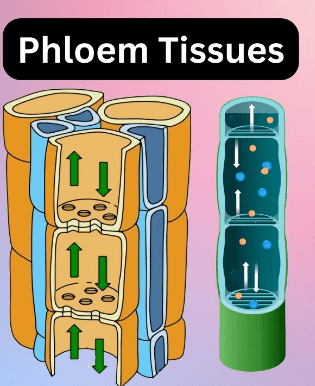
Types of Animal Tissue
1. Epithelial Tissue:
Epithelial tissue covers and protects the surfaces of the body, like skin, and lines internal organs. Epithelial cells are closely packed, forming a barrier that prevents germs from entering. They also help absorb, filter, and excrete substances. Epithelial tissue comes in different forms, like simple (one layer) or stratified (multiple layers), depending on its role.
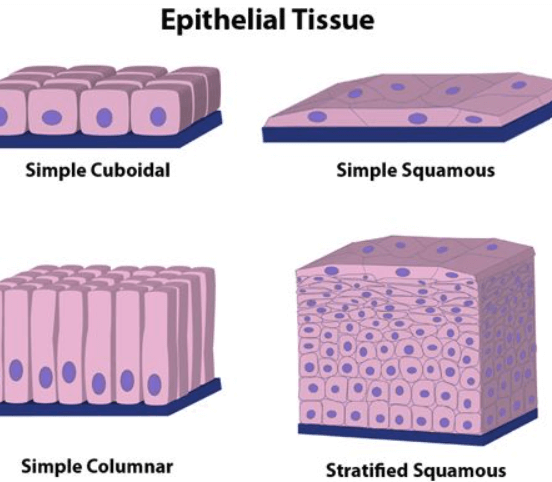
2. Connective Tissue:
Connective tissue supports and binds other tissues and organs. It includes bone, blood, and cartilage. These tissues are made of cells and fibers that give strength, elasticity, and flexibility. Blood transports nutrients, bones support and protect, and cartilage provides a flexible structure. Connective tissue varies in density, from loose (under the skin) to dense (tendons).
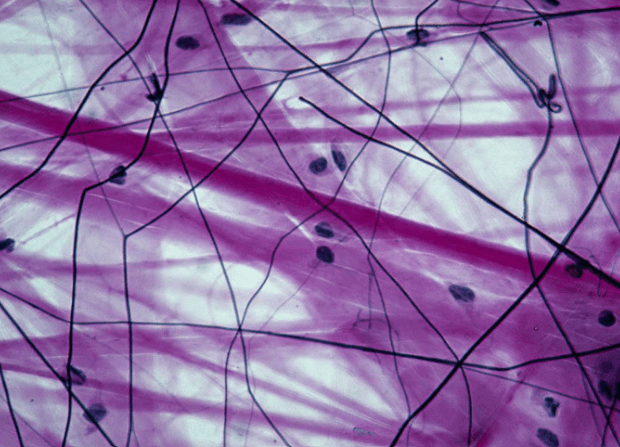
3. Nervous Tissue:
Nervous tissue controls and coordinates body functions. It’s made up of nerve cells, or neurons, that carry messages between the brain and body. Neurons transmit electrical signals, helping us sense, think, and respond. Nervous tissue is found in the brain, spinal cord, and nerves, playing a crucial role in our responses to stimuli.
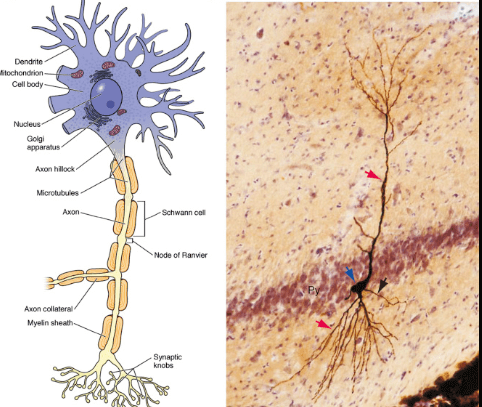
4. Muscular Tissue:
Muscular tissue is responsible for movement. There are three types muscles: skeletal (attached to bones and helps in voluntary movement), cardiac (found in the heart, pumping blood), and smooth (in internal organs, managing involuntary actions like digestion). Muscle cells can contract and relax, allowing movement and maintaining posture.
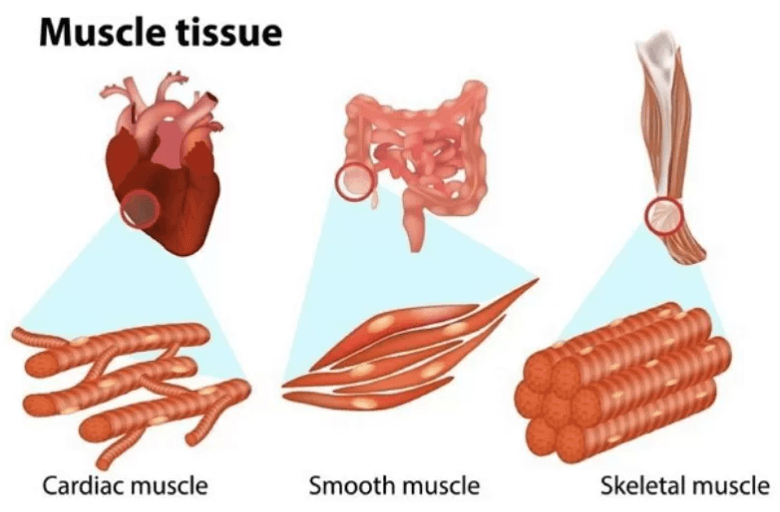
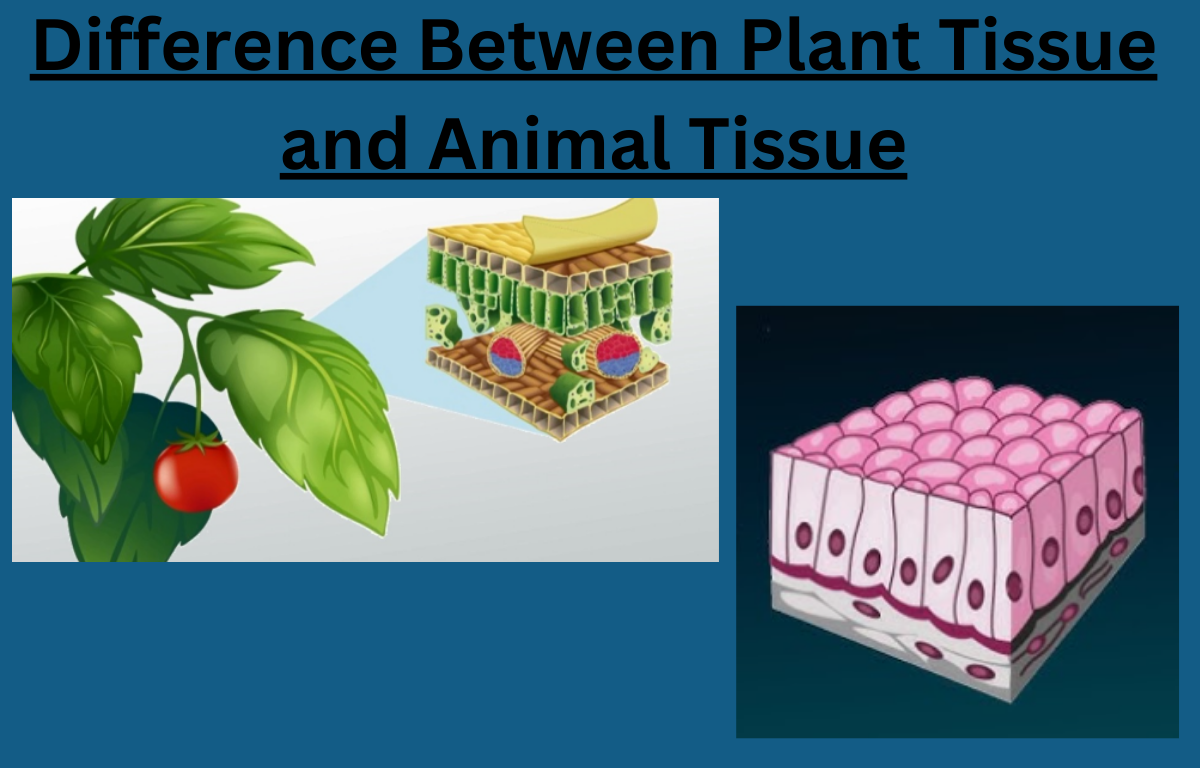

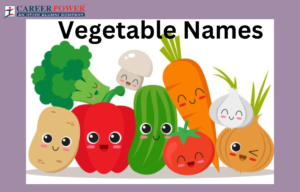 50 Vegetables Name for Kids in English a...
50 Vegetables Name for Kids in English a...
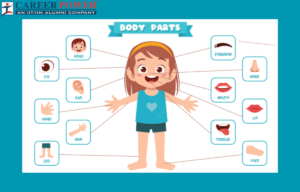 Body Parts Name, All 50 Body Parts Name ...
Body Parts Name, All 50 Body Parts Name ...
 Flowers Names in English and Hindi, List...
Flowers Names in English and Hindi, List...









